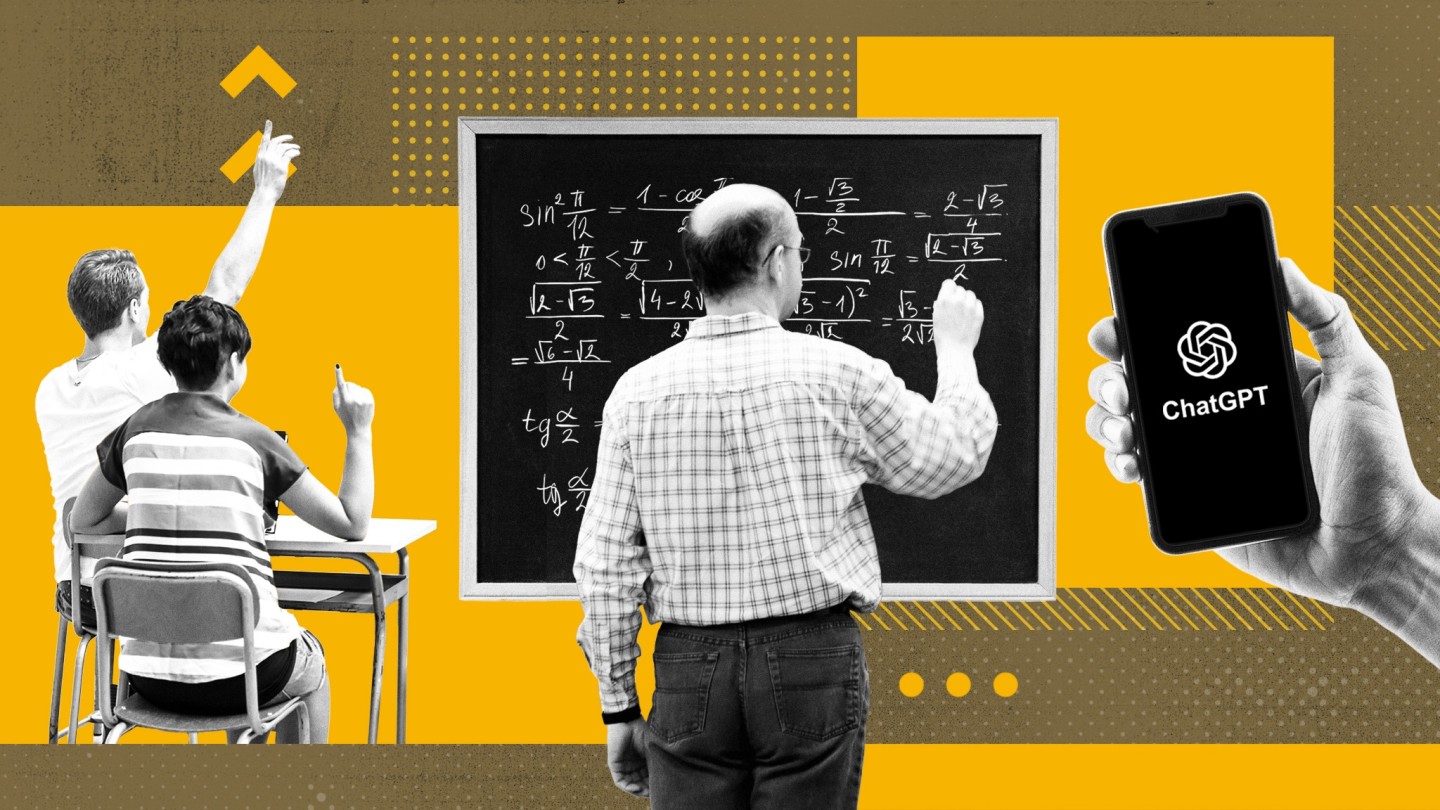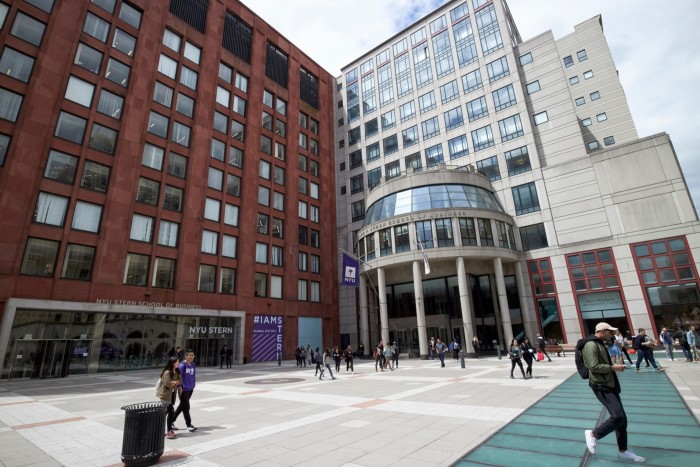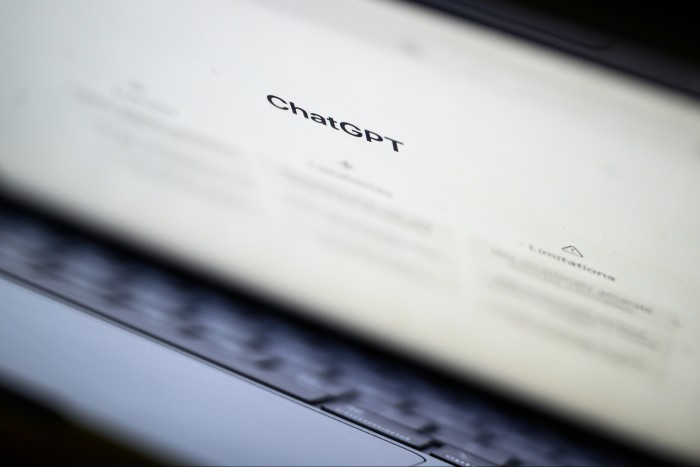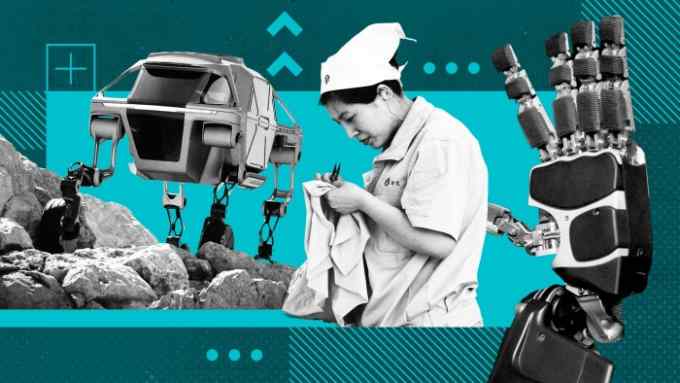Academics express confidence that they and AI can work together

Simply sign up to the Education myFT Digest -- delivered directly to your inbox.
Artificial intelligence may not be about to replace teachers and college professors altogether, but it is augmenting the way the education sector engages with learning.
Robert Seamans, professor of Management and Organisations at NYU Stern School of Business, expects he and his peers will be helped to become better at what they already do by AI tools such as ChatGPT, rather than having their roles taken over.
They will certainly be “faster, and I hope it means that’s better,” explains Seamans — and he is well placed to judge, having co-authored research into the professions most vulnerable to the rapid growth of AI.
This research found that eight out of the top 10 occupations exposed to AI are in the education sector: mainly teachers of various subjects, including sociology and political science. However, that does not necessarily mean they will be replaced, Seamans stresses, only that the way they carry out their work will be affected in a range of ways.

The study does recognise the potential for job losses and the role of government in managing the disruption, but also points to the technology’s potential. A workforce trained in AI will help both companies and workers themselves as they “take advantage of the new tools”, the research concluded.
In education, the implications include a change in the way those in academia deliver content and engage with their students, with more access being via tools such as ChatGPT, and administrative automated tasks.
Use cases: learning chatbots and writing prompts
David Veredas is professor at Vlerick Business School in Brussels. He sees AI as a “facilitator” to educators and their students in the same way that other tools such as Google and Wikipedia have done so until now. “First we had the whiteboard, then we had slides, and now we have artificial intelligence,” Veredas says. “We can do many more things, like using virtual reality to enhance the learning experience.”
Others see the potential of AI as an enhancer in the classroom. Greg Benson, professor of computer science at the University of San Francisco, has recently launched GenAI café, an informal forum where students share views about the potential of generative AI. “I feel like I am a kid in a candy store right now,” he says. “There is so much changing.”
Benson says intelligent chatbots have emerged as part of his university’s early thinking of AI tools that can aid learning. “They won’t give you the answer but they will help you reason through the problems you’re working on,” he says.
However, he is concerned about plagiarism as a result of the use of language models. “Cheating is not a new problem but we have made it explicit that you cannot turn in generative AI-produced work,” he explains.

Seamans has started using ChatGPT to help speed up his writing process. He says writing “comes a little bit quicker because I stick some initial thoughts into ChatGPT, and I start to get a structure or a framework”. He adds: “I never use most of what it gives me because it’s not in my words. [But] it sparks this creative process . . . it gives me something to react to.”
In this way, AI is likely to make some tasks easier to perform, rather than making roles redundant. As well as assisting in drafting initial research ideas, it can help structure academic papers, or provide a platform for brainstorming. This would speed up the academic workflow but not replace the creative or intellectual input of the teachers. “It doesn’t have to be the removal of a professor in front of the class,” stresses Seamans.
Jobs enhanced: lecturers and classroom teachers
Benson points to experimental tools developed by large tech firms that will act as virtual assistants, not necessarily replacing one but creating a new AI function. He highlights Google’s NotebookLM, which helps find trends from uploaded documents. “You can ask it to summarise. You can ask it to produce stuff. That’s one example where you could imagine a lecturer putting in their notes, to make it available to their students now. Is that a new position or is it an augmentation of my current role?”

It helps with students’ thinking process, too. “If you’re taking an ancient Chinese history class, and you get all your lecture notes and you can put them in [NotebookLM]. This application would automatically generate a list of questions and answers from those notes, then create flashcards for them. So then you could study from that material.”
Veredas is optimistic about his profession surviving and thriving despite the advent of AI. He stresses the irreplaceable core of learning that involves interaction, discussion and critical thinking, which AI cannot easily replicate.
He says: “AI may flip the classroom. We can allow students to learn the basic concepts at home with AI and then we can go deeper into the discussion in class. But it remains to be seen. We need to be open to new technology and embrace it whenever it’s useful for learning.”
Join youth talks on AI
The Financial Times is inviting young people aged 15-29 to take part in an ambitious global online discussion on AI in education that launches next month.
The Higher Education for Good Foundation, in partnership with a wide range of organisations, is hosting Youth Talks on AI from April 8 to May 6, to explore views on the roles and effects of artificial intelligence in learning as well as on wellbeing and climate
With support from a network of volunteer youth ambassadors and leading experts, young people will have a chance to express their views online, with AI helping translate their insights from multiple languages, and summarising their opinions.
They can share what they think on how AI might enhance and disrupt teaching and learning, how they are already using it, what they think the boundaries should be and how to prepare for a future where it will play an increasing role.
Anyone interested can find out more and register to take part by clicking here on the Youth Talks link.
The FT will summarise the most important trends and insights in its forthcoming report on AI for Schools to be published at the end of May.
A recent survey of young people’s views on what should be taught in schools to create the future they seek highlighted almost none of the traditional skills such as science, technology, engineering, maths, social sciences and the humanities.
Instead the respondents focused on the importance of learning how to allow them to live together in harmony, citing qualities such as respect, kindness, solidarity, moral values in general, tolerance, open-mindedness, empathy, acceptance, responsibility, friendship and love.

Comments